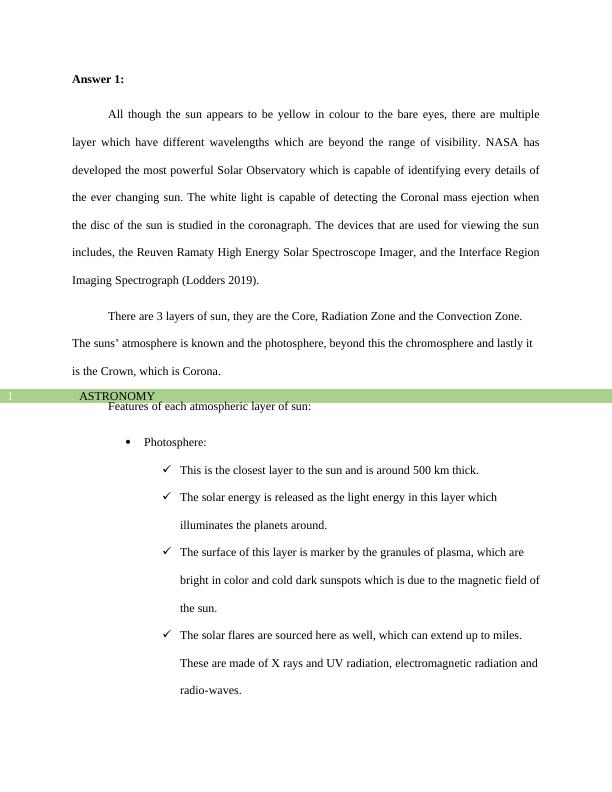Assignment on Astronomy, NASA
5 Pages616 Words37 Views
Added on 2022-08-12
About This Document
Each question 200 words: Question 1: How are astronomers able to see the different layers of the Sun's atmosphere? In other words, what kind of light/filter do you need to use to see the different layers? What kind of features can be seen in each layer? Be sure to use the terms photosphere, chromosphere, and corona. Question 2: How did the spectral matching technique that you used in the lab work? What are the different spectral types, and how can you tell them apart?
Assignment on Astronomy, NASA
Added on 2022-08-12
ShareRelated Documents
End of preview
Want to access all the pages? Upload your documents or become a member.


